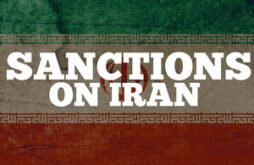CHRI —On the occasion of the International Day of Sign Languages and International Week of the Deaf, the Center for Human Rights in Iran (CHRI) urges the Iranian government to officially recognize sign language and introduce legislation guaranteeing deaf and hard of hearing citizens access to professional sign language interpreters.

“It has been nearly a decade since Iran endorsed the CRPD and yet the government has still not carried out its commitments to support Iranian sign language,” said CHRI’s Executive Director Hadi Ghaemi. “This prevents deaf and hard of hearing people from accessing their basic rights of health, education, independent living and freedom from violence and abuse.”
According to Article 21 of the Convention on the Rights of Persons with Disabilities (CRPD), ratified by the Islamic Republic of Iran in 2008, Iran is required to accept and facilitate “the use of sign languages, Braille, augmentative and alternative communication, and all other accessible means, modes and formats of communication of their choice by persons with disabilities in official interactions.”
According to Article 9, the government should “provide forms of live assistance and intermediaries, including guides, readers and professional sign language interpreters, to facilitate accessibility to buildings and other facilities open to the public.” Article 24 also calls for “facilitating the learning of sign language and the promotion of the linguistic identity of the deaf community.”
According to the World Health Organization’s 2018 estimates, five percent of the world’s population lives with some form of a hearing disability. Iran does not compile statistics on this segment of its population but according to the State Welfare Organization’s (SWO) latest figures, 220,000 individuals are registered with some form of a hearing impairment. According to activists, three to five percent of Iran’s student population of an estimated 15 million is also believed to be hard of hearing.
Deaf people in Iran encounter frequent discrimination and neglect by educational and state institutions. According to CHRI and Human Rights Watch’s wide-ranging report on disabilities in Iran released in 2018, most SWO branch offices do not have sign language interpreters and the staff often treat people with disabilities and their families with disrespect.
The report, which includes dozens of interviews and eyewitness reports, also shows how the lack of sign language interpreters at the SWO prevents people with disabilities from accessing health care.
“Iranian sign language is being suppressed,” an advocate for the rights of people with disabilities told CHRI. “The government is making every effort to prevent the growth and spread of sign language.”
“On the one hand, huge budgets are granted to cochlear implantation, but on the other hand, nothing is allocated to train professional sign language interpreters, to codify Iranian sign language, or to make public information available in sign language,” said the activist who requested anonymity for security reasons.
“Even emergency services such as the police, emergency medical assistance, and fire stations are inaccessible to the deaf,” added the activist.
The UN Committee on the Rights of Persons with Disabilities has expressed serious concerns regarding the lack of action by the Iranian government in officially recognizing sign language and providing professional interpreters for the deaf.
It has also called on Iran to “Recognize Persian Sign Language as an official language and its use in schools, and establish, jointly with organizations of deaf persons, a mechanism to certify the quality of interpretation services and ensure opportunities for continuous training for sign language interpreters.”
“The government of Iran should immediately end discrimination against Iranian sign language and make plans to implement its commitments to the deaf and hard of hearing in accordance with the CRPD,” said Ghaemi.
“The deaf and hard of hearing and their families should have access to sign language educational services and be able to use sign language in their daily lives without barriers,” he added.
 Shabtabnews In this dark night, I have lost my way – Arise from a corner, oh you the star of guidance.
Shabtabnews In this dark night, I have lost my way – Arise from a corner, oh you the star of guidance.


